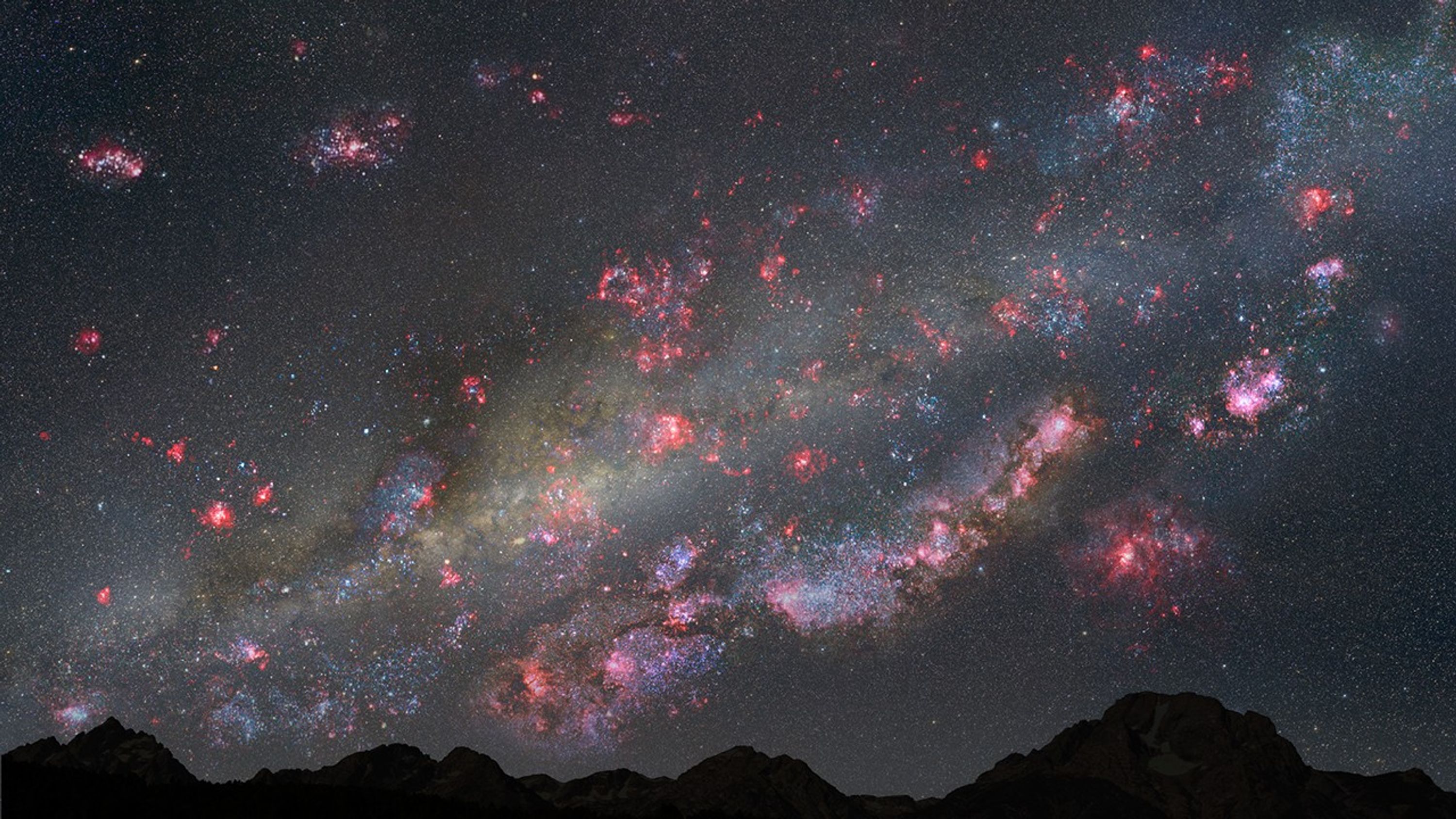1 min read
Hubble Galaxy at Redshift z = 2.4

About the Object
- DistanceDistanceThe physical distance from Earth to the astronomical object. Distances within our solar system are usually measured in Astronomical Units (AU). Distances between stars are usually measured in light-years. Interstellar distances can also be measured in parsecs.Redshift z = 2.4
About the Data
- Data DescriptionData DescriptionProposal: A description of the observations, their scientific justification, and the links to the data available in the science archive.
Science Team: The astronomers who planned the observations and analyzed the data. "PI" refers to the Principal Investigator.The science findings are based on various Hubble archival observations of galaxy surveys, including COSMOS, CDF–S, UDS, GOODS, and CANDELS. The images were created from Hubble data from proposal 12060, PIs: S. Faber (University of California, Santa Cruz) and H. Ferguson (STScI), et al. The science team includes: C. Papovich (Mitchell Inst./Texas A&M U.), I. Labbé (Leiden Obs.), R. Quadri and V. Tilvi (Mitchell Inst./Texas A&M U.), E.F. Bell (U. Michigan, Ann Arbor), K. Glazebrook (CAS/Swinburne U.), L. Spitler (Macquarie U., Sydney/ AAO), C.M.S. Straatman (Leiden Obs.), K.-V. Tran (Mitchell Inst./Texas A&M U.), P. Behroozi (STScI), M. Cowley (CAS/Swinburne U.), R. Davé (U. Western Cape/South African Astronomical Obs./African Inst. for Mathematical Sciences, Cape Town), A. Dekel (Hebrew U. of Jerusalem), M. Dickinson (NOAO), H.C. Ferguson (STScI), S.L. Finkelstein (U. Texas, Austin), E. Gawiser (Rutgers U.), H. Inami (NOAO), G. Kacprzak (CAS/Swinburne U.), L. Kawinwanichakij (Mitchell Inst./Texas A&M U.), D. Kocevski (U. Kentucky), A. Koekemoer (STScI), D. Koo (Lick Obs./U. California, Santa Cruz), P. Kurczynski (Rutgers U.), J.M. Lotz (STScI), Y. Lu (Kavli Institute/Stanford U.), R.A. Lucas (STScI), D. Mcintosh (U. Missouri, Kansas City), N. Mehrtens (Mitchell Inst./Texas A&M U.), B. Mobasher (U. California, Riverside), A. Monson (Carnegie Obs.), G. Morrison (IfA/U. Hawaii/CFHT), T. Nanayakkar (CAS/Swinburne U.), S.E. Persson (Carnegie Obs.), B. Salmon (Mitchell Inst./Texas A&M U.), R. Simons (JHU), A. Tomczak (Mitchell Inst./Texas A&M U.), P. van Dokkum (Yale U.), B. Weiner (Steward Obs./U. Arizona), and S.P. Willner (Harvard-Smithsonian Center for Astrophysics). - InstrumentInstrumentThe science instrument used to produce the data.HST>ACS/WFC and HST>WFC3/IR
- Release DateApril 9, 2015
- Science ReleaseOur Sun Came Late to the Milky Way’s Star-Birth Party
- Credit
Related Images & Videos

A Firestorm of Star Birth
This illustration depicts a view of the night sky from a hypothetical planet within the youthful Milky Way galaxy 10 billion years ago. The heavens are ablaze with a firestorm of star birth. Glowing pink clouds of hydrogen gas harbor countless newborn stars, and the bluish-white...

The Growth of Milky Way-Like Galaxies Over Time
These six snapshots taken by NASA's Hubble Space Telescope show how galaxies similar in mass to our Milky Way evolved over time. The images reveal that Milky Way-like galaxies grow larger in size and in stellar mass over billions of years. The image at far right reveals a...
Share
Details
Last Updated
Aug 17, 2025
Contact
Media
Claire Andreoli
NASA’s Goddard Space Flight Center
Greenbelt, Maryland
claire.andreoli@nasa.gov

































